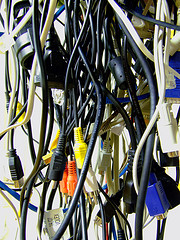September 16th, 2009 by Eugene Barsky | No Comments »

Scott Dunbar is an associate professor in the Norman B. Keevil Institute of Mining Engineering at the University of British Columbia. His recent work on biomining was highlighted in UBC Reports a few months ago – “The virus that binds: A novel idea marries biology and mining”
You can see much of the biomining research in the Web of Science database (for UBC folks, here is the direct link to the appropriate search )
** photo by Martin Dee
Posted in Chemical and Biological Engineering, Chemistry, Earth and Ocean Sciences, General Science, Main, Materials Engineering, Mining engineering, Science - undegraduate classes | No Comments »
August 25th, 2009 by Eugene Barsky | No Comments »
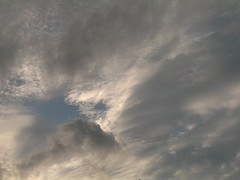
I have posted about climate engineering before. Here is the new article from the last issue of Science that discusses the risks of climate engineering – “Risks of Climate Engineering”
Risks of Climate Engineering
Gabriele C. Hegerl and Susan Solomon (21 August 2009)
Science 325 (5943), 955. [DOI: 10.1126/science.1178530]
This short opinion article presents the points against temperature changes potentially caused by geoengineering…
** photo by http://www.flickr.com/photos/courambel/
Posted in Atmospheric Science, Chemical and Biological Engineering, Earth and Ocean Sciences, General Science, Geography, Main, Physics | No Comments »
August 18th, 2009 by Eugene Barsky | No Comments »
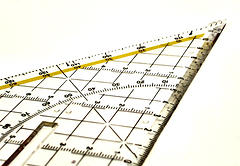
All IMS articles 2004 and forward are freely available in a postprint format on arXiv <http://arxiv.org/>, as well as those articles posted by authors.
From the IMS website: http://www.imstat.org/publications/arxiv.html
ArXiv is an open access, fully automated electronic archive and distribution server for research articles, now owned and operated by Cornell University, and partially funded by NSF. The main fields it covers are physics, mathematics, non-linear science, computer science, and quantitative biology. Recently, arXiv has cooperated with IMS and the Bernoulli Society to open up a new statistics category within mathematics. We expect this category to eventually grow into a top level archive comparable to e.g. mathematics and physics.
Great news, IMS!
** photo by http://www.flickr.com/photos/saz/
Posted in Main, Mathematics, News, Science - undegraduate classes, Statistics | No Comments »
August 5th, 2009 by Eugene Barsky | No Comments »

The International Mathematical Union is offering videos that were recorded at the International Congresses of Mathematicians in 1998, 2002, and 2006. IMU maintains the copyright of the videos but gives everyone interested the permission to download and show the videos.
http://www.mathunion.org/activities/icm/videos
** photo by http://www.flickr.com/photos/mscolly/
Posted in Main, Mathematics, Science - undegraduate classes | No Comments »
July 20th, 2009 by Eugene Barsky | No Comments »

New Scientist reports about the final draft of the American Meteorological Society‘s carefully worded position paper on geoengineering. The AMS is the first major scientific body to officially endorse research into geoengineering.
From New Scientist:
The document states that “deliberately manipulating physical, chemical, or biological aspects of the Earth system” should be explored alongside the more conventional approaches to climate change. Conventional approaches means reducing emissions – “mitigation” in policy-speak – and adjusting to the unavoidable effect of climate change – known as “adaptation”.
The paper states that “even aggressive mitigation of future emissions cannot avoid dangerous climate changes resulting from past emissions. Furthermore, it is unlikely that all of the expected climate-change impacts can be managed through adaptation. Thus, it is prudent to consider geoengineering’s potential benefits, to understand its limitations, and to avoid ill-considered deployment”.
http://www.newscientist.com/article/dn17490-climate-engineering-research-gets-green-light.html?DCMP=OTC-rss&nsref=online-news
** photo by courambel
Posted in Atmospheric Science, Chemical and Biological Engineering, Chemistry, Earth and Ocean Sciences, General Science, Geography, Main, Materials Engineering, Physics, Uncategorized | No Comments »
July 8th, 2009 by Eugene Barsky | No Comments »
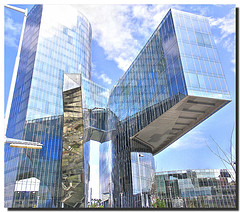
Yesterday’s article in NYT fascinated me with its title – “As Unbreakable as … Glass?”
There is lots of research in this area that you can find in Web of Science database, Compendex database, and of course in the standard-bearer for anything chemical – SciFinder Scholar database.
We also own hundreds of books on this topic. Here is the short list for Glass.
** photo by smb
Posted in Amusing stuff, Chemical and Biological Engineering, Chemistry, Civil Engineering, Main, Materials Engineering, Science - undegraduate classes | No Comments »
July 3rd, 2009 by Eugene Barsky | No Comments »

A very recent article on PLoS One is worth the read –
Bollen J, Van de Sompel H, Hagberg A, Chute R, 2009 A Principal Component Analysis of 39 Scientific Impact Measures. PLoS ONE 4(6): e6022. doi:10.1371/journal.pone.0006022
Abstract:
Background
The impact of scientific publications has traditionally been expressed in terms of citation counts. However, scientific activity has moved online over the past decade. To better capture scientific impact in the digital era, a variety of new impact measures has been proposed on the basis of social network analysis and usage log data. Here we investigate how these new measures relate to each other, and how accurately and completely they express scientific impact.
Methodology
We performed a principal component analysis of the rankings produced by 39 existing and proposed measures of scholarly impact that were calculated on the basis of both citation and usage log data.
Conclusions
Our results indicate that the notion of scientific impact is a multi-dimensional construct that can not be adequately measured by any single indicator, although some measures are more suitable than others. The commonly used citation Impact Factor is not positioned at the core of this construct, but at its periphery, and should thus be used with caution.
Frankly, I was surprised by the authors’ conclusion, particularly with this piece: “Our results indicate that the JIF and SJR express a rather particular aspect of scientific impact that may not be at the core of the notion of scientific “impact”. Usage-based measures such as Usage Closeness centrality may in fact be better “consensus” measures.”
I am used to be inquired about Journal Impact Factor (JIF) so often in academia and know that it used for tenure consideration in many departments in UBC.
** photo by testone 22
Posted in Astronomy, Atmospheric Science, Chemical and Biological Engineering, Chemistry, Civil Engineering, Earth and Ocean Sciences, General Science, Geography, Main, Materials Engineering, Mathematics, Mechanical Engineering, Physics, Podcasts, Science - undegraduate classes, Statistics, Wood Sciences | No Comments »
June 24th, 2009 by Eugene Barsky | No Comments »
Here is the presentation Kevin Lindstom, Aleteia Greenwood and myself have presented at the second international m-Libraries Conference yesterday (Wed June 23, ’09) in Vancouver, BC
Abstract:
Introduction
While the concept is widely defined and interpreted, all Web 2.0 tools have certain characteristics in common; they are collaborative in nature, interactive, and dynamic. The Science and Engineering librarians at the University of British Columbia are collaborating with their liaison departments to record science and engineering podcasts, host them and share them with a wider audience.
Objectives
In this session, we discuss the use of podcasting as an outreach tool that connects a large academic science and engineering library with its users and raises users’ awareness of additional library services. Functionality, usability and practical applications of podcasting tools are reviewed.
Outcomes
At the end of this session, we will have demonstrated:
1) Overall usability of podcasting academic science and engineering content; tips and tricks when creating and tailoring podcasts to your community needs;
2) Use of podcasting as an outreach and community engagement tool in academic libraries and as a supplement for the traditional academic information resources.
Discussion
The strength of podcasting, to allow content to be created by the users for the users, makes it an appealing addition to the academic librarians’ toolbox. Podcasting is a service that many of our users might not expect from their library, which makes it a unique and attractive offering. It requires few resources, and the end result might exceed librarians’ expectations. We found podcasting to be a robust outreach tool and a service that raises the profile of the library and as such creates an opportunity for users to find additional library resources. Nevertheless, it is necessary for academic librarians to critically evaluate the continuous innovations of Web 2.0 technologies on an ongoing basis so that they are best prepared to put them into the
Here is the presentation in PDF format (100KB) – Portable Science and here it is embedded in the blog’s entry.
We will also add the podcast of this presentation in a few days as well…
Posted in General Science, Main, News, Teaching | No Comments »
June 18th, 2009 by Eugene Barsky | No Comments »
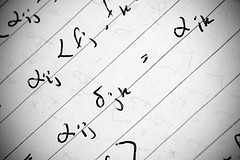
A short article from last month in the New Scientist discussed the changes in quantum computing in the last decade. Another related article from the April’s Science could also be of interest – “Where Is My Quantum Computer?”
See more research about quantum computing in the Web of Science database that UBC subscribes to. Here are 180 articles retrieved for my quick search for “quantum comput*” and secur* (you need a subscription to this database to view the results).
** Photo by All Glass
Posted in General Science, Main, Physics, Uncategorized | No Comments »




